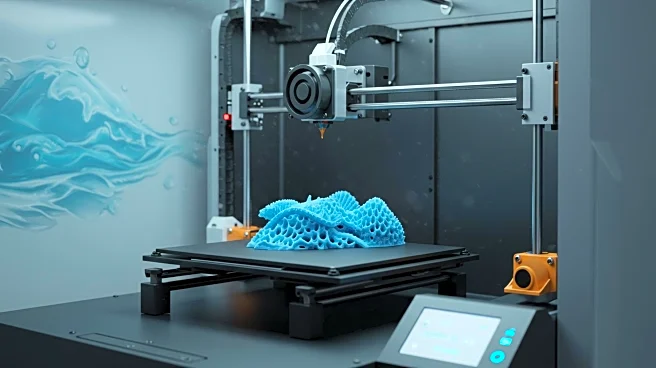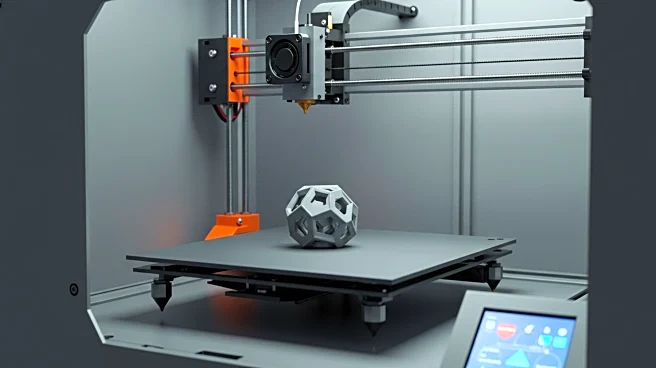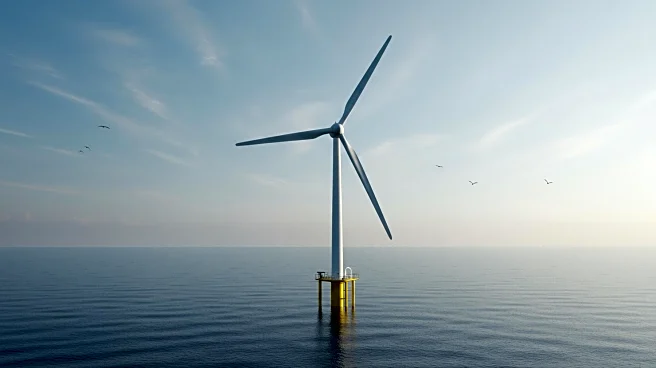What's Happening?
The National Renewable Energy Laboratory (NREL) has unveiled a new laser-powered metal 3D printer at its Flatirons Campus, designed to enhance the prototyping process for marine energy technologies. This advanced printer allows researchers to quickly produce metal components for marine energy devices, which are crucial for harnessing energy from ocean waves, currents, and tides. The printer, customized by One-Off Robotics and funded by the U.S. Department of Energy, can create near-full-scale structures up to one meter long, enabling rapid testing and development of new designs. The technology aims to reduce costs and waste associated with prototyping, facilitating faster innovation in marine energy and other sectors such as aerospace and naval technology.
Why It's Important?
The introduction of this 3D printer is significant for the marine energy sector, which has the potential to provide a substantial portion of the U.S.'s electricity needs. By streamlining the prototyping process, NREL is addressing one of the major barriers to the commercial success of marine energy technologies: the high cost and time involved in developing and testing new designs. This advancement could lead to more affordable and efficient energy solutions, benefiting coastal security and maritime industries. Additionally, the printer's capabilities extend beyond marine energy, offering potential improvements in manufacturing processes for various industries, thereby enhancing U.S. competitiveness in technology and innovation.
What's Next?
Researchers at NREL plan to use the new 3D printer to explore different marine energy device designs and manufacturing methods, aiming to lower production costs and improve device performance. The printer's ability to produce complex metal parts could lead to breakthroughs in design and efficiency, accelerating the path to commercialization for marine energy technologies. As the technology matures, it may also support advancements in other fields, such as aerospace and naval engineering, by providing rapid prototyping capabilities that bypass lengthy supply chain delays.
Beyond the Headlines
The deployment of this advanced 3D printer highlights the growing importance of additive manufacturing in research and development. By enabling the creation of complex geometries and reducing reliance on overseas manufacturing, this technology could foster greater innovation and self-sufficiency in U.S. industries. Furthermore, the focus on marine energy aligns with broader efforts to diversify energy sources and reduce environmental impact, contributing to sustainable development goals.












